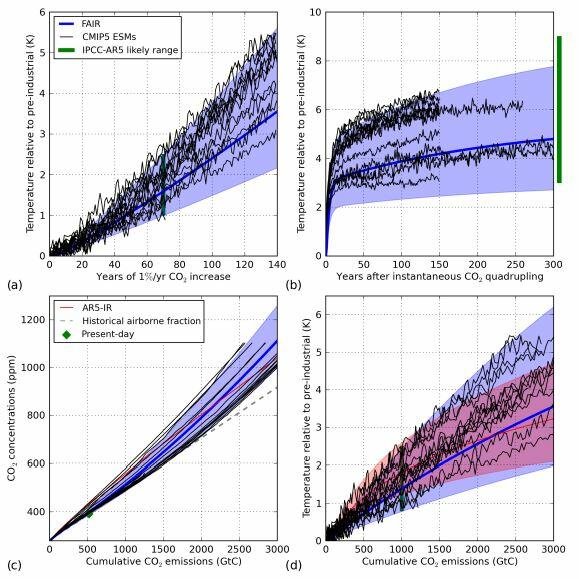A modified impulse-response representation of the global near-surface air temperature and atmospheric concentration response to carbon dioxide emissions

Authors: Richard J. Millar, Zebedee R. Nicholls, Pierre Friedlingstein, and Myles R. Allen
Citation: Millar, R. J., Nicholls, Z. R., Friedlingstein, P., and Allen, M. R. 2017. A modified impulse-response representation of the global near-surface air temperature and atmospheric concentration response to carbon dioxide emissions, Atmospheric Chemistry and Physics, 17, 7213-7228, https://doi.org/10.5194/acp-17-7213-2017.
Abstract: Projections of the response to anthropogenic emission scenarios, evaluation of some greenhouse gas metrics, and estimates of the social cost of carbon often require a simple model that links emissions of carbon dioxide (CO2) to atmospheric concentrations and global temperature changes. An essential requirement of such a model is to reproduce typical global surface temperature and atmospheric CO2 responses displayed by more complex Earth system models (ESMs) under a range of emission scenarios, as well as an ability to sample the range of ESM response in a transparent, accessible and reproducible form. Here we adapt the simple model of the Intergovernmental Panel on Climate Change 5th Assessment Report (IPCC AR5) to explicitly represent the state dependence of the CO2 airborne fraction. Our adapted model (FAIR) reproduces the range of behaviour shown in full and intermediate complexity ESMs under several idealised carbon pulse and exponential concentration increase experiments. We find that the inclusion of a linear increase in 100-year integrated airborne fraction with cumulative carbon uptake and global temperature change substantially improves the representation of the response of the climate system to CO2 on a range of timescales and under a range of experimental designs.